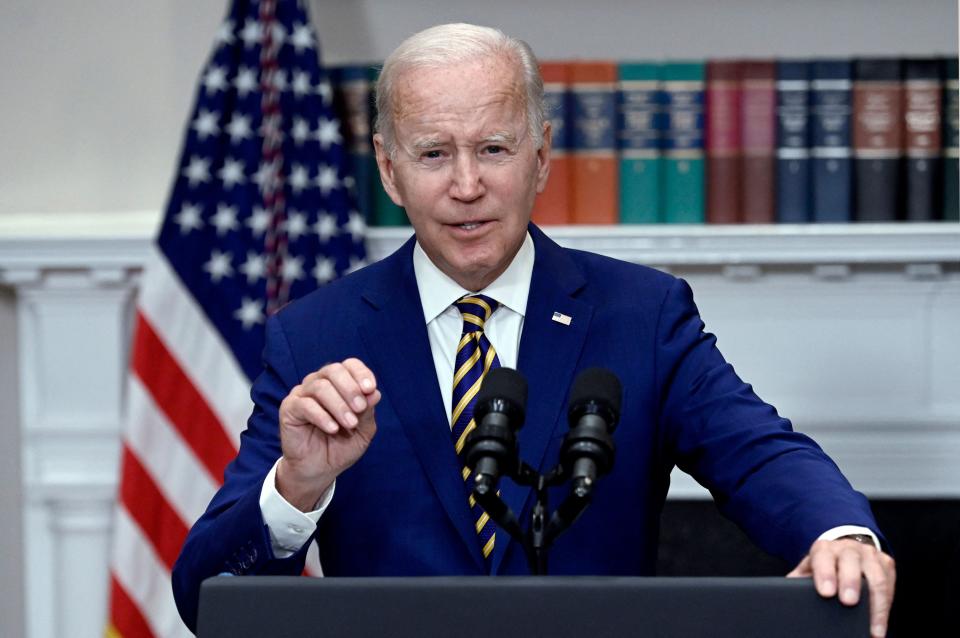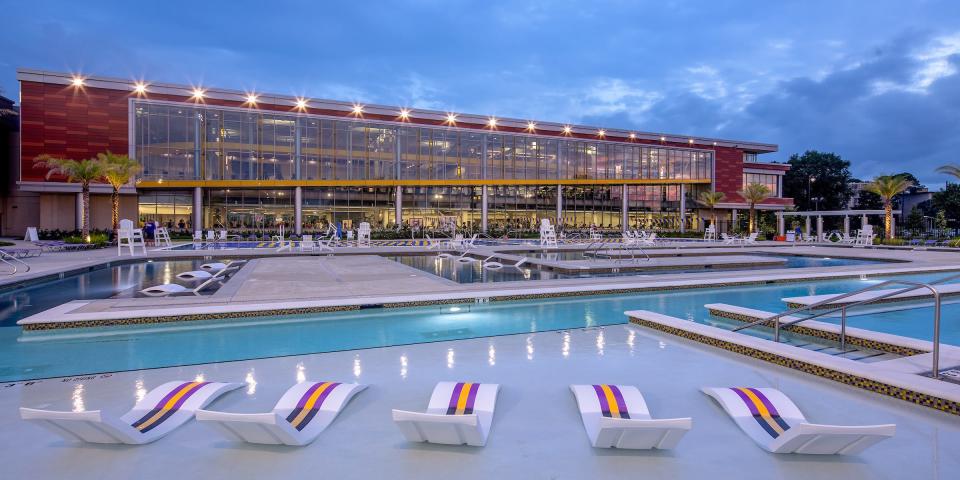Lazy rivers and college costs: How Biden's loan forgiveness subsidizes students' play time
If your car muffler had a hole, how would you fix it? Would you grab some duct tape and tape over the hole? Or would you take your car to the shop to have it repaired? In our student debt crisis, President Joe Biden thinks duct tape is the solution.
Biden will forgive at least $10,000 in federal student debt for most borrowers and erase $20,000 for Pell Grant recipients. But just like duct tape, the plan only temporarily solves the problem for some, not all, borrowers.
The cost to taxpayers is estimated to be more than $300 billion, which could make an already horrible inflation rate even worse.
Pouring gasoline on inflationary fire
Former President Barack Obama’s top economist, Jason Furman, said on Twitter, “Pouring roughly half trillion dollars of gasoline on the inflationary fire that is already burning is reckless. Doing it while going well beyond one campaign promise ($10K of student loan relief) and breaking another (all proposals paid for) is even worse.”
Opinion alerts: Get columns from your favorite columnists + expert analysis on top issues, delivered straight to your device through the USA TODAY app. Don't have the app? Download it for free from your app store.
The president may well set the car on fire.
There are better solutions. The Biden administration needs to take the car to the shop to tackle the problem head on.
This college experience shouldn't be typical: A weekend date and unspoken expectations
Dropping a kid at college?: Seek out the home-away-from-home mom and bond before you go
Tuition increases outpace inflation
Let’s start with tuition. Why is it so high? In 1963, the average public college tuition was $243. Adjusted for inflation, that’s $2,352.78. That price, if it were actually available today, would be an enormous bargain. The average public college tuition is now $9,349.
What happened?
In 1965, President Lyndon Johnson signed The Higher Education Act, which provided subsidized federal grants and loans to post-secondary students. The act gave students access to low interest loans provided by taxpayer dollars. Over time, the program almost crowded out private lenders.
Today, about 93% of all student loans are owned by the U.S. Department of Education, which presides over $1.62 trillion in student loan debt.

In 2020, 55% of students graduating with a bachelor’s degree from four-year public and private nonprofit colleges had student loan debt. And as tuition continues to increase, as well as the number of loans politicians promise to forgive, so will the number of students taking federal loans.
Don't be fooled: 'Forgiving' student loans isn't motivated by kindness. It's all about cold, hard politics.
So why don’t colleges lower tuition? Because they don't have an incentive to. In fact, the incentive is to do the opposite. University administrators know that if they raise tuition and fees, the federal government will increase the student loan cap.
Colleges are free to spend money on expensive projects, including recreational diversions such as rock walls and lazy rivers, and students will take out loans to pay for it all.
Movie theaters and bowling alleys on campus
Recreational amenities are now an undeniable factor in students' decision about which university to attend, so colleges compete with one another over the recreational options they offer.
At my alma mater, The University of Texas at Austin, there is a movie theater, an underground bowling alley and two recreation centers.
In 2017, Louisiana State University built a 536-foot-long lazy river as part of an $85 million expansion of its recreation center, a project paid for with student fees.

A bandage on a broken system: My students struggle to pay for college. Loan forgiveness doesn't fix the system.
University leaders argued for years that less financial support from state governments was the main cause of tuition increases. Now, they're pointing to the surge in inflation.
A study by the Federal Reserve Bank of New York, however, found proof that federal loans are causing tuition to rise. Researchers found that for every $1 increase in the subsidized student loan cap, tuitions rose about 60 cents.
Get out of the student loan business
How can we slow tuition increases? One step the federal government should take is to decrease the amount of money it loans, which would force universities to cut costs. The federal government also needs to eventually get out of the student loan business altogether. Pushing student loans into the private sector would introduce competition just as we now have with home and auto loans.
I paid off $65K in debt months before Biden's loan forgiveness: Here's how I feel.
We also should try a solution, proposed by Milton Friedman in 1955, called income-share agreements. In these agreements, students are loaned money in exchange for a fixed percentage of their future income. The system encourages students to work immediately after graduation, and it puts them at ease because they know the loans will be paid off by a set date.
Income-share agreements are already available with some universities, private lenders and potential employers.
Plenty of creative solutions are available. But merely forgiving student loans is not sustainable. Let’s ditch the duct tape and actually fix the problem.
More from Chris Schlak:
Inside CPAC, lies and conspiracy theories. Is this what conservatism is all about?
Will Gen Z politicians help the country unite? I was disappointed by their answers.
Joe Biden's presidency is failing. And Americans are hurting because of it.
Chris Schlak is an Opinion fellow for USA TODAY. He graduated with a degree in government from The University of Texas at Austin in May. He founded and edited The Texas Horn, an Intercollegiate Studies Institute student publication at UT Austin. Follow him on Twitter: @ChrisSchlak
You can read diverse opinions from our Board of Contributors and other writers on the Opinion front page, on Twitter @usatodayopinion and in our daily Opinion newsletter. To respond to a column, submit a comment to letters@usatoday.com.
This article originally appeared on USA TODAY: Biden's student loan forgiveness lets colleges drive up tuition costs

